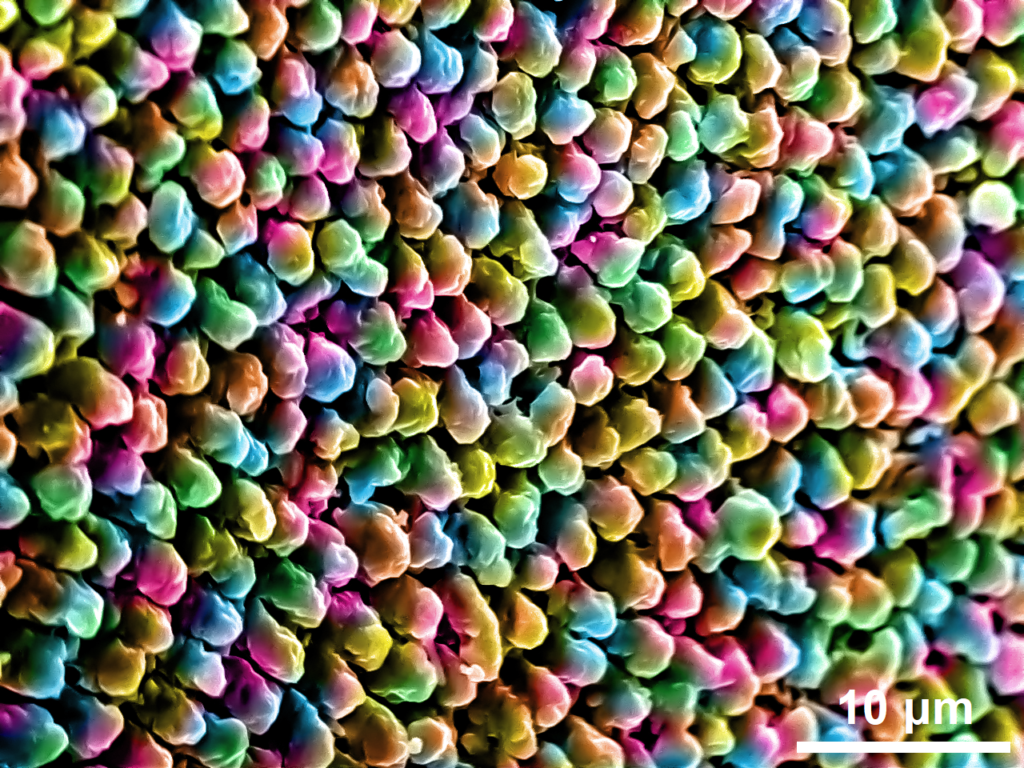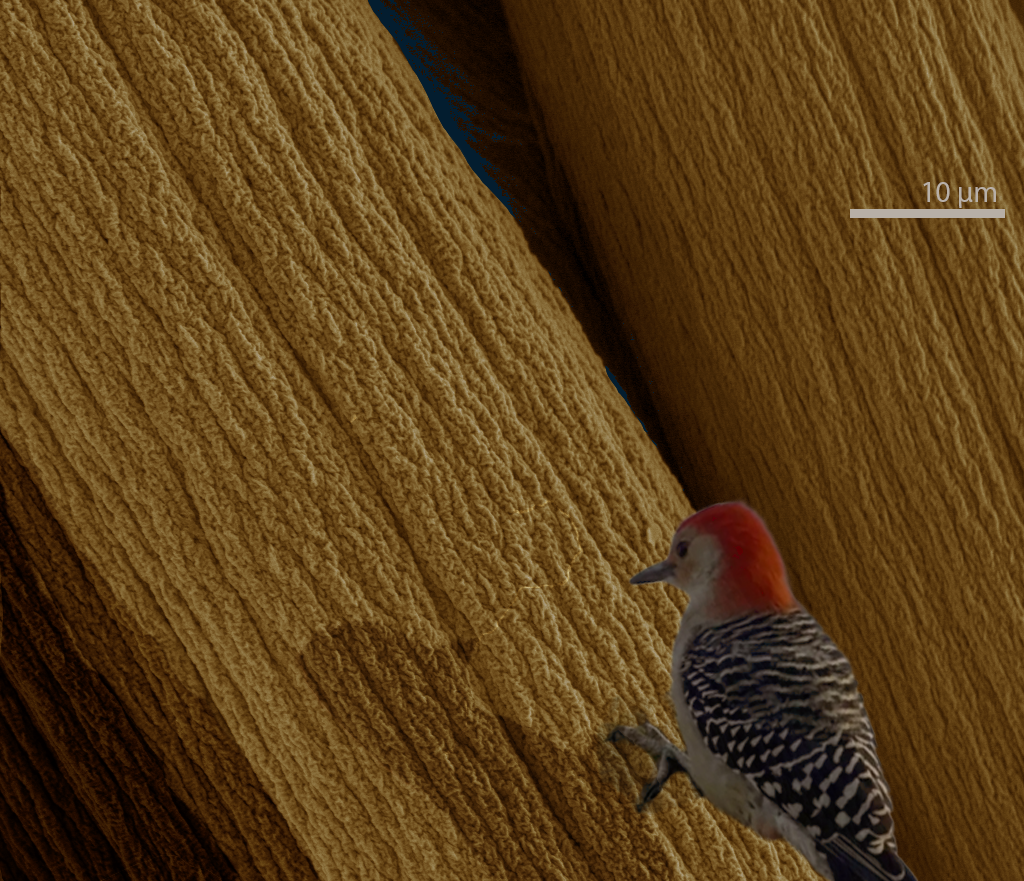The National Nanotechnology Coordinated Infrastructure is a network of labs and research centers equipped to visualize and manipulate matter at the smallest scales. Funded by the National Science Foundation, the NNCI aims to make the highly specialized tools and technology necessary for this work more broadly available to researchers of all stripes.
As the Mid-Atlantic Nanotechnology Hub, Penn’s Singh Center is one of NNCI’s 16 member sites. And as part of the NNCI’s mission to open up the world of the nanoscale, Singh researchers are invited to submit snapshots examples of their work to the NNCI’s annual “Plenty of Beauty at the Bottom” image contest.
Referencing the 1959 lecture by Richard Feynman,“There’s Plenty of Room at the Bottom,” the contest celebrates Feynman’s call for scientists and engineers to think big by visualizing the very small. Using the highly specialized microscopes available at NNCI sites, the entries depict complex structures that are no bigger than a red blood cell, as well as useful patterns with features only a few atoms across.
Two images produced at the Singh Center are in contention this year, one in each of the contest’s categories: “Most Stunning” and “Most Whimsical.” Artists in the former category capture beautiful images that are only visible using powerful microscopes, while those in the latter creatively modify such images to produce playful scenes.
Winners will be chosen by a public vote, and will receive funds to support travel to a professional conference. Voting is open until October 15.
Most Stunning: sAlt Water Taffy
Timothy Lee, doctoral student in the Department of Materials Science and Engineering

“Inspired by all the playful colors and flavors of New Jersey salt water taffy, this image makes microstructures look good enough to eat! However, it might taste like metal — all of these lumps are 100% Aluminum (Al). In our lab, we focus on creating metal nanostructures even smaller than the lumps shown in this image that can react fully with water to produce hydrogen gas for various energy applications. Original details were not altered, but rainbow colorization effect was applied.”
Most Whimsical: Arboreal Alginate
Christopher Johnson and Ravisara Wattana, doctoral students in the departments of Chemical and Biomolecular Engineering and Materials Science and Engineering, respectively.

